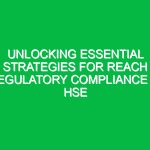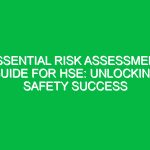Introduction
Hello team! Today, we are conducting a toolbox talk focused on a critical aspect of our health, safety, and Environment (HSE) practices: Cold Stress. As we move into colder months, it’s vital to understand how cold weather can impact our health and Safety on the job. This talk will cover the dangers of Cold Stress, how to recognize its symptoms, and the Best Practices to prevent it, ensuring we all stay safe while working in cold conditions.
What is Cold Stress?
Cold Stress refers to a group of cold-related health issues that can occur when the body loses heat faster than it can produce it. This includes conditions such as hypothermia, frostbite, and trench foot. Each of these conditions can lead to severe health problems if not addressed promptly. Understanding Cold Stress is imperative, especially for those of us working outdoors or in unheated spaces during winter.
Recognizing the Symptoms of Cold Stress
Being able to identify the symptoms of Cold Stress is crucial for early intervention. Here are the key symptoms to watch out for:
- Hypothermia: Shivering, confusion, slurred speech, and drowsiness.
- Frostbite: Numbness, tingling, and discoloration of fingers, toes, earlobes, or the nose.
- Trench Foot: Cold, wet feet, swelling, and pain.
Remember, these conditions can escalate quickly. If you or a coworker begin to experience these symptoms, it is essential to take action immediately.
Real-Life Examples
Let’s discuss some real-life scenarios to illustrate the impact of Cold Stress. Consider a construction site during a chilly morning. Workers may be focused on their tasks and neglect to notice how low the temperature has dropped. One worker starts to shiver and feels unusually tired but pushes through the discomfort. Later, this worker suffers from hypothermia, requiring medical attention. This scenario highlights the importance of being vigilant about our body’s responses to cold conditions.
The Importance of Prevention
Preventing Cold Stress is not just about personal Safety; it’s about maintaining a productive workplace. Cold-related illnesses can lead to decreased work performance, increase the risk of accidents, and lead to long-term health issues. By practicing good cold weather safety, we ensure that everyone goes home healthy at the end of the day.
Best Practices to Prevent Cold Stress
Here are some practical steps to prevent Cold Stress:
- Dress Appropriately: Wear layers of clothing, including thermal undergarments, insulated outer layers, and waterproof gear. Ensure your head, hands, and feet are adequately protected.
- Take Frequent Breaks: Schedule regular breaks in a warm area to allow your body to reheat.
- Stay Hydrated and Nourished: Drink warm, non-alcoholic beverages and eat high-energy foods to keep your body fueled.
- Monitor Weather Conditions: Keep an eye on weather forecasts and be aware of wind chill factors, which can significantly increase the risk of Cold Stress.
Safety Considerations and Regulations
In our commitment to safety, it’s essential to adhere to relevant regulations and Standards regarding Cold Stress. OSHA (Occupational Safety and Health Administration) recommends that employers assess the risks of cold exposure and implement appropriate Safety Measures. Our company policies align with these regulations, ensuring we provide a safe working environment.
Compliance is not just a legal obligation; it’s a moral one. By following these guidelines, we protect ourselves and our coworkers, fostering a culture of safety that can save lives.
Actionable Advice for Employees
As part of our toolbox talk, I want you to take this advice seriously:
- Wear the right gear for the weather conditions, and don’t hesitate to layer up.
- Communicate with your team. If you notice someone showing signs of Cold Stress, speak up and offer help.
- Know the location of first aid supplies and how to use them, especially for treating frostbite and hypothermia.
- Participate in Training sessions about Cold Stress management to keep your knowledge up to date.
Discussion and Engagement
Now, let’s open the floor for discussion. What strategies have you found effective in preventing Cold Stress? Do you have any experiences or stories to share about working in cold conditions? Engaging in dialogue allows us to learn from each other and improve our collective safety practices.
Conclusion
In conclusion, understanding and addressing Cold Stress is essential for all of us. We have the responsibility to recognize the symptoms, implement Best Practices, and comply with safety regulations. Remember, a safe workplace is a productive workplace, and it’s up to each of us to contribute to a culture of safety and health.
Thank you for your attention and commitment to safety. Let’s continue to look out for one another as we navigate the challenges of working in cold weather. Stay safe, everyone!


